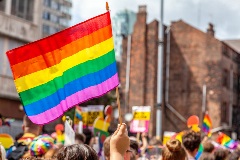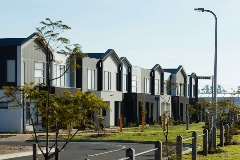
Although Canada has advanced its legal protections in the workplace for individuals who identify as part of the 2SLGBTQ+ community, these persons can still be vulnerable to harassment and/or discrimination in the workplace. "2SLGBTQ+" refers to a range of gender and sexual identities, including Two Spirit, lesbian, gay, bisexual, transgender, and queer, and the plus sign indicates the inclusion of other gender or sexual minorities.
The Law
In Ontario, sexual orientation is protected by both federal and provincial legislation. The Canadian Human Rights Act (the "Act") applies to employees in a federally-regulated workplace. The Act states that all individuals should have equal opportunity without being hindered in doing so by discriminatory practices based on protected grounds including sexual orientation, and gender identity or expression. There are several provisions relating specifically to the employment context, such as that it is a discriminatory practice, directly or indirectly, to refuse to employ or continue to employ any person or to differentiate adversely in relation to an employee on a prohibited ground of discrimination.
Most people in Ontario are employed at provincially-regulated workplaces. This means that they fall under the scope of the Ontario Human Rights Code (the "Code"). The Code gives every person a right to equal treatment with respect to employment without discrimination based on a number of protected grounds including sexual orientation, gender identity and gender expression. The Code also protects every employee from harassment in their workplace by their employer, the employer's agent or another employee because of their sexual orientation, gender identity and gender expression (and other protected grounds). Additionally, the Code states that every person has a right to equal treatment with respect to vocational associations including membership in a trade union, trade or occupational association or self-governing profession without discrimination based on sexual orientation, gender identity and gender expression. (and other protected grounds).
Therefore, a person cannot be treated unequally or harassed in their employment because they identify as part of the 2SLGBTQ+ community. This means that homophobic conduct and comment are prohibited, regardless of what the victim's sexual orientation actually is or is thought to be by the harasser.
What is Discrimination? What is Harassment?
While discrimination is undefined in the Ontario Code, harassment is defined in the Code as "engaging in a course of vexatious comment or conduct that is known or ought reasonably to be known to be unwelcome". Neither discrimination nor harassment is defined in the Canadian Act. Therefore, this definition has both a subjective and objective test.
According to the Ontario Human Rights Commission, discrimination because of sexual orientation includes "any distinction, including exclusion, restriction or preference based on sexual orientation, that results in the impairment of the recognition of human rights and fundamental freedoms." Discrimination can be direct and intentional, or it can be more subtle and less direct, which can be more difficult to detect. This may require investigation and analysis.
Practical Steps for Inclusion in the Workplace
There are a number of practical steps employers can take to make their workplace more 2SLGBTQ+ friendly. For example, employers could:
- ensure any uniforms that are a part of the work environment are gender neutral;
- encourage (without mandating) the use of pronouns in signature lines on emails and other correspondence;
- provide gender-neutral washrooms;
- create an Inclusion committee, if they do not already have one; and
- ensure that workplace policies do not assume heterosexual relationships.
Every individual in a workplace should make an effort to create an inclusive workplace. Employees who have ideas on how to better promote 2SLGBTQ+ inclusion should speak with their employer.
Conclusion
If you identify as part of the 2SLGBTQ+ community and feel that your rights have been impacted at your workplace, please feel free to reach out to Robins Appleby LLP for advice and assistance.
written by articling student Erran Lee and partner Barbara Green

/barbara-green2.tmb-0.jpg?sfvrsn=159a230_3)





